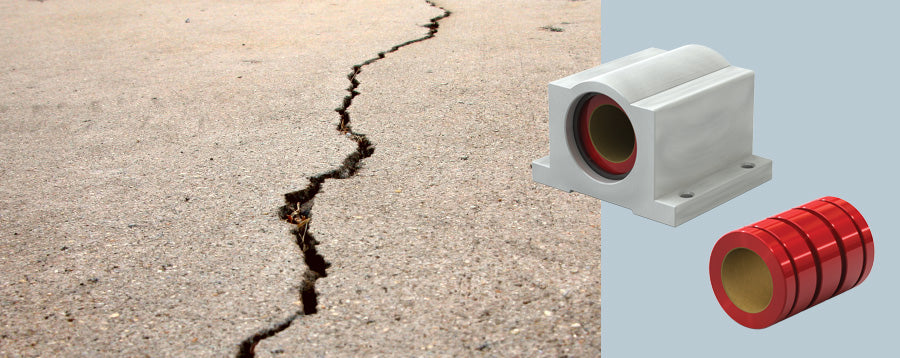
Components:
Retrofit or OEM:
Problem:
Solution:
The PBC Linear solution
Simplicity® plain linear bearings and pillow blocks, when combined with PBC Linear ceramic coated shafting, provided reliable performance in the WUSCEEL shock table for earthquake research. Featuring a proprietary FrelonGold® liner in the inner diameter, these bearings enhance load capacities and dampen shock vibration, with no rolling elements to fret or seize, eliminating the potential for catastrophic failure in heavy-load, short-stroke conditions. They ensure smooth, quiet, and long-lasting linear motion in the harsh environment of the shock table, resisting dirt, heat, and vibration. The WUSCEEL shock table is used for a wide range of structural analysis, including bridge and building stability research, fragility curves, and vibration control of aerospace systems. By enabling experiments on structures and materials affected by earthquakes or high-vibration surroundings, these bearings supported researchers in discovering new ways to build earthquake-resistant bridges, more reliable airplanes, and stronger buildings.
Discover the best linear bearing solution for your application
- Browse and buy linear plain bearing pillow blocks
- Browse and buy all types of linear bearings
- Request your FREE product sample
- Request a quote
- Contact an engineer
